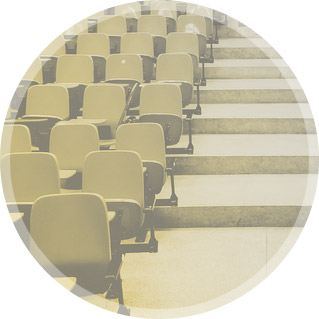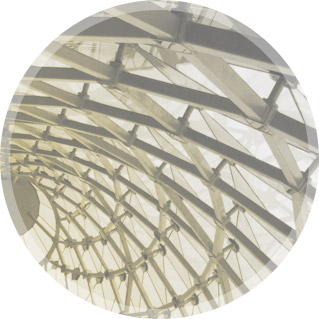Utah Valley University
Architecture Department
UVU’s Bachelor of Architecture is a five-year professional degree with initial NAAB-Accreditation candidacy that prepares students for leadership in the profession of architecture and urban design. The program promotes a built environment that fosters genuine communities and is durable, useful, beautiful, and human-scaled. The degree is rooted in classical and traditional architecture, giving students a holistic foundation that balances the art of building with aesthetic sensibilities, historical precedents with contemporary needs, craftsmanship with digital technologies, and theory with practice-based application. Our goal is to produce “master builder” practice-ready graduates who go forth to create a lasting and beautiful world that uplifts the human spirit.
The program is structured as a 2+3 stackable credential, awarding an Associate of Science in Engineering Design Technology after the first two years and a professional Bachelor’s degree after the final three years, allowing students who do not wish to pursue licensure a two-year path into the design profession.

Setting
Utah Valley University (UVU) is situated in Orem, Utah, at the base of the stunning Wasatch Mountain Range. Nestled in the heart of the picturesque Utah Valley, the university's campus offers a unique blend of natural beauty and modern amenities. With the towering peaks of the Wasatch Mountains to the east and the serene Utah Lake to the west, UVU's setting is both inspiring and conducive to a vibrant learning environment.
The history of UVU is marked by rapid growth and transformation. Founded in 1941 as a vocational school, it has since evolved into a comprehensive regional teaching institution. One of the most notable developments in UVU's history was its transition to university status in 2008, reflecting its commitment to academic excellence and the diverse needs of its student body.
As UVU continues to expand, its campus reflects a commitment to innovative and sustainable design. New state-of-the-art facilities and green spaces provide students with a dynamic and forward-thinking environment for learning and collaboration.
In this setting and history, students at UVU will find a blend of tradition and innovation, where they can engage with the rich natural surroundings, participate in a rapidly growing academic community, and benefit from modern resources and facilities. This combination creates a unique and exciting backdrop for their educational journey.
School Philosophy
1. Aesthetics: We celebrate the creative process by teaching our students to cultivate their imagination, refine their craft, and design with beauty. This is accomplished when a building’s composition (i.e., the whole and parts) reveals an inner harmony and unity. We do this by grounding our students in timeless and tested design principles, patterns, proportions, sacred geometry, and spatial relationships inherent in nature and the classical tradition. Students also address the ethical function and aesthetics of architecture by understanding the built environment’s phenomenological effect on human perception, behavior, and experience. We encourage students to produce architecture that moves beyond prose and into poetry – an architecture that transforms chaos into cosmos and inspires the human spirit.
2. Culture: We infuse our students with an understanding of the importance of defending the authenticity of the human experience by honoring and preserving the spirit of a place, its culture, traditions, memory, and history. We study architectural precedents to learn from the past and address design challenges in a culturally and contextually sensitive way. We teach students the importance of approaching the design process with empathy, compassion, and humility so one might build upon the past and preserve the embodied history of architecture.
3. Technology: We promote creative problem solving by equipping out students with the technical skills to address the needs of the 21st century. Instead of succumbing to the aesthetics of speed, newness, and innovation, we focus instead on providing a timeless education balanced between theory and practice. This includes topics ranging from community engagement to globalization, historic preservation to adaptive reduce, building science to evidence-based design, environmental stewardship to wise resource management, new urbanism to revitalization of cities.
4. Well-being: In addition to architecture’s need to protect the public’s health, safety, and welfare, we teach our students to transcend those expectations and produce sustainable environments that enrich the human experience by promoting healing and well-being. Our traditional approach to design teaches students to look beyond the contemporary aesthetics of consumerism and instead focus on the durability, longevity, and adaptive-reuse potential of buildings. Building for time is a form of environmental stewardship and wise resource management which supports the University’s campus-wide sustainability initiative.

Programs
The newly created Architecture Program at UVU is a five-year professional degree designed to meet the National Architectural Accreditation Board (NAAB) requirements. The degree features a rigorous design-oriented curriculum with a solid foundation in technology, practice-based coursework, plan and document generation, building codes, specifications, digital parametric modeling, building information modeling, architectural visualization, digital fabrication, building envelope systems, structural systems, and building sustainability. Students will become experts in current design and building technologies, making them ideal employees in architecture offices and related design & construction industries including civil, mechanical, and electrical.
The program at UVU emphasizes education in the classical and vernacular architecture. Students will research the traditional principles and philosophies of history to encourage a sense of community, a balance and respect with our natural environment, and wise use of limited resources and energy. Program coursework will study the past to inform the future. We emphasize the enduring design standards from history to inform and incorporate ideas into cutting edge technologies and solutions for modern society.
The program is structured as a two plus three stackable credential, awarding an Associate of Science in Engineering Design Technology after the first two years and a comprehensive Bachelor's degree for the final three years. This allows students who do not wish to pursue licensure a two-year path into the profession. In their final three years, students engage in coursework which readies them to become licensed, practicing architects, projects managers, principals, owners, and community leaders in the profession. Students acquire leadership skills through courses in professional practice, ethics, and architectural registration exam preparation.

of Focus
1. Art & Design
2. Materials and Construction
3. Building Technologies
4. Historic Preservation
5. Community Design
6. History | Theory |Criticism
7. Cross-Cultural Contexts | Human Experiences
8. Urbanism

Opportunities

Facilities

Policies
Transfer Policies
Utah Valley University welcomes transfer students who have completed relevant coursework at other accredited institutions. We carefully evaluate transcripts and prior academic achievements to ensure a seamless transition into our program. Our goal is to provide transfer students with the necessary support and guidance to excel in their architectural studies and make the most of their educational experience at UVU.



